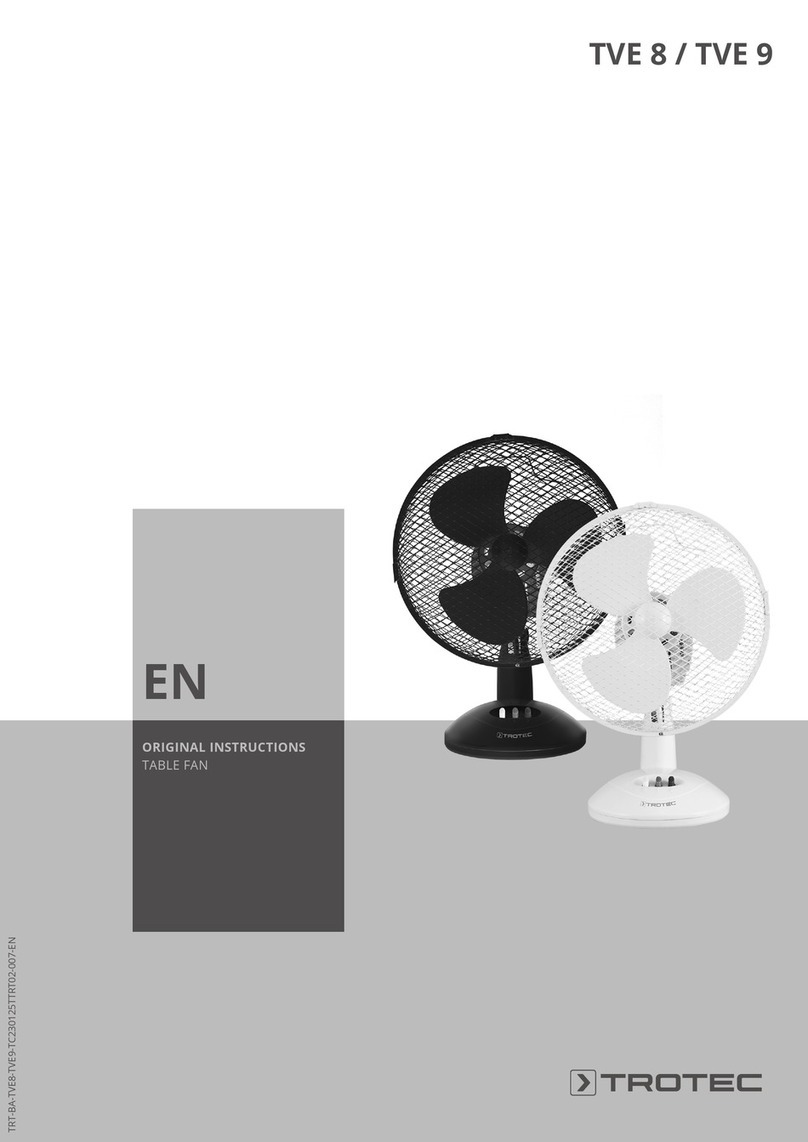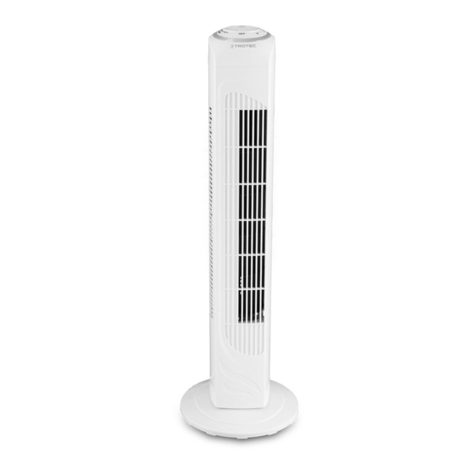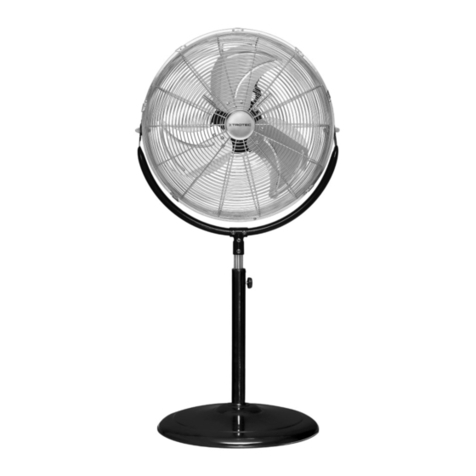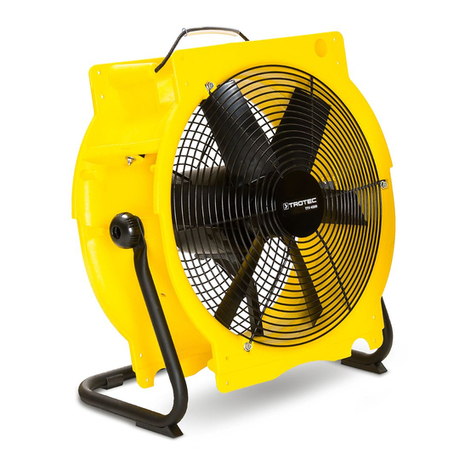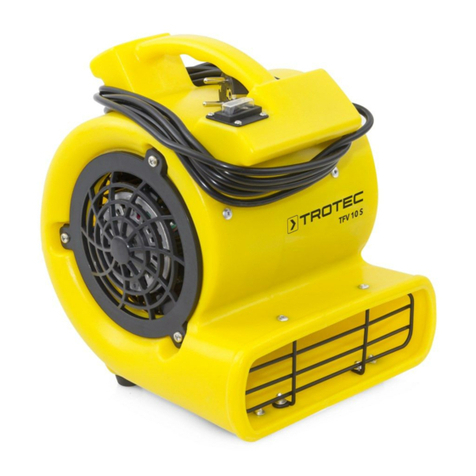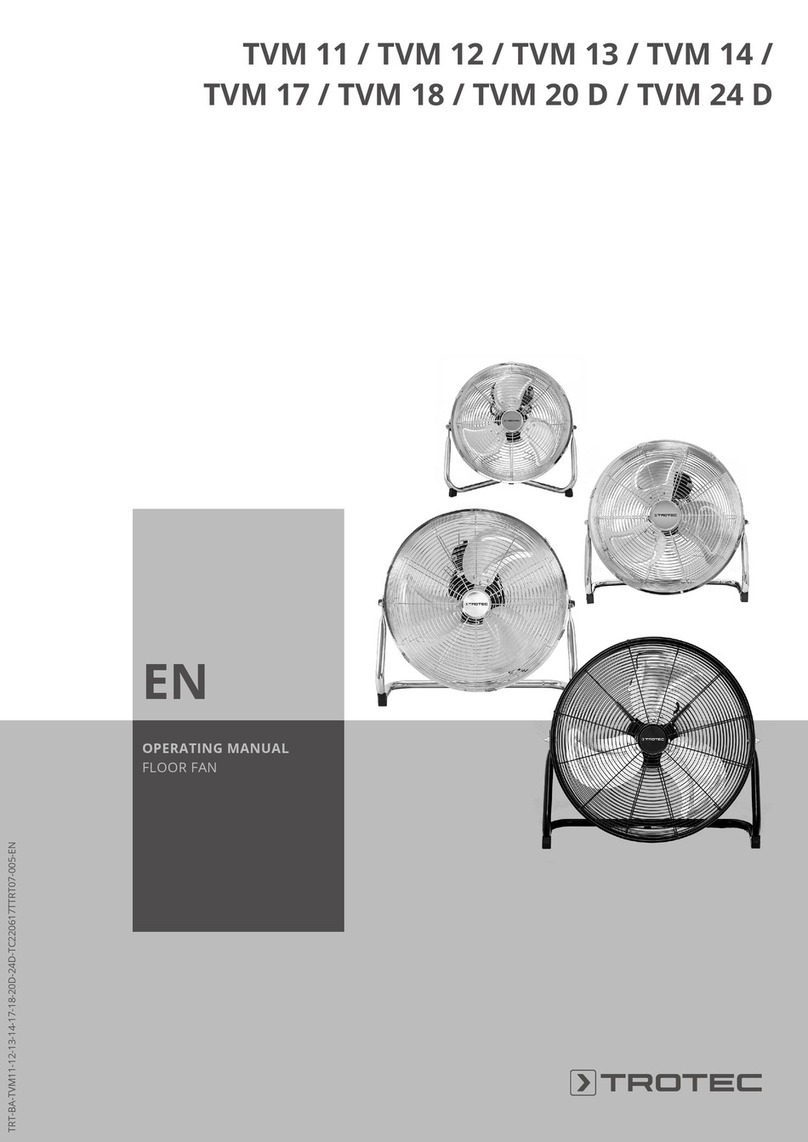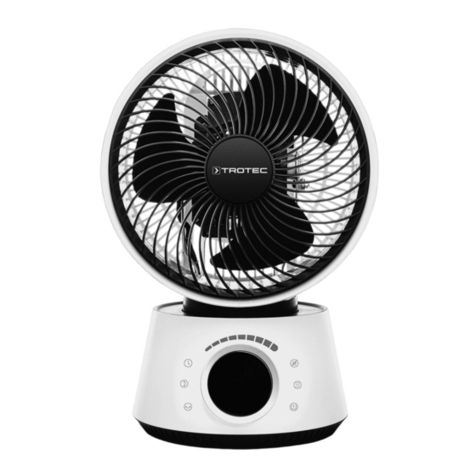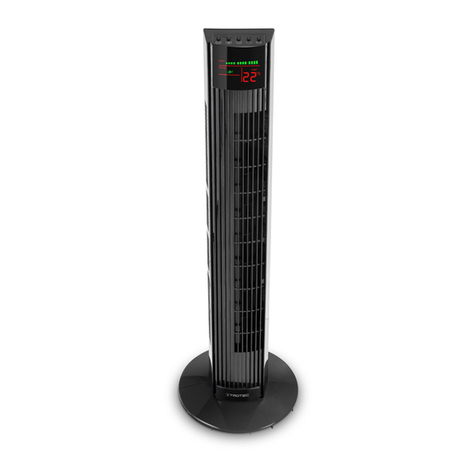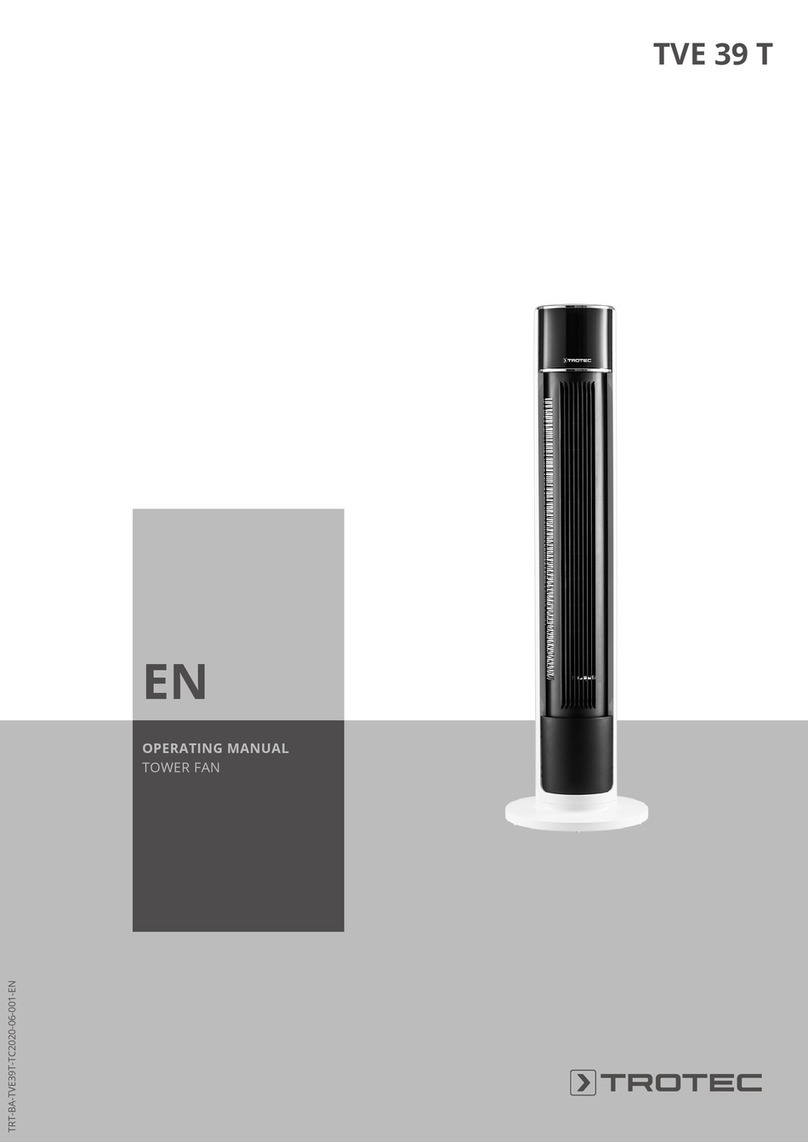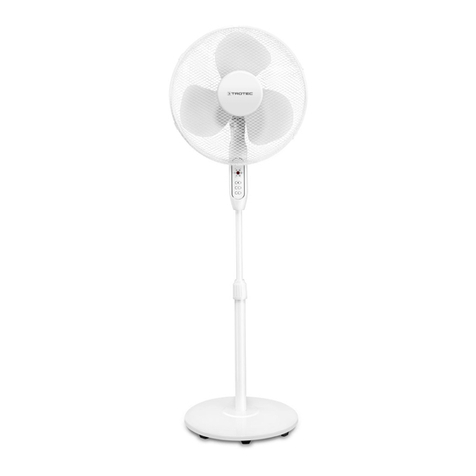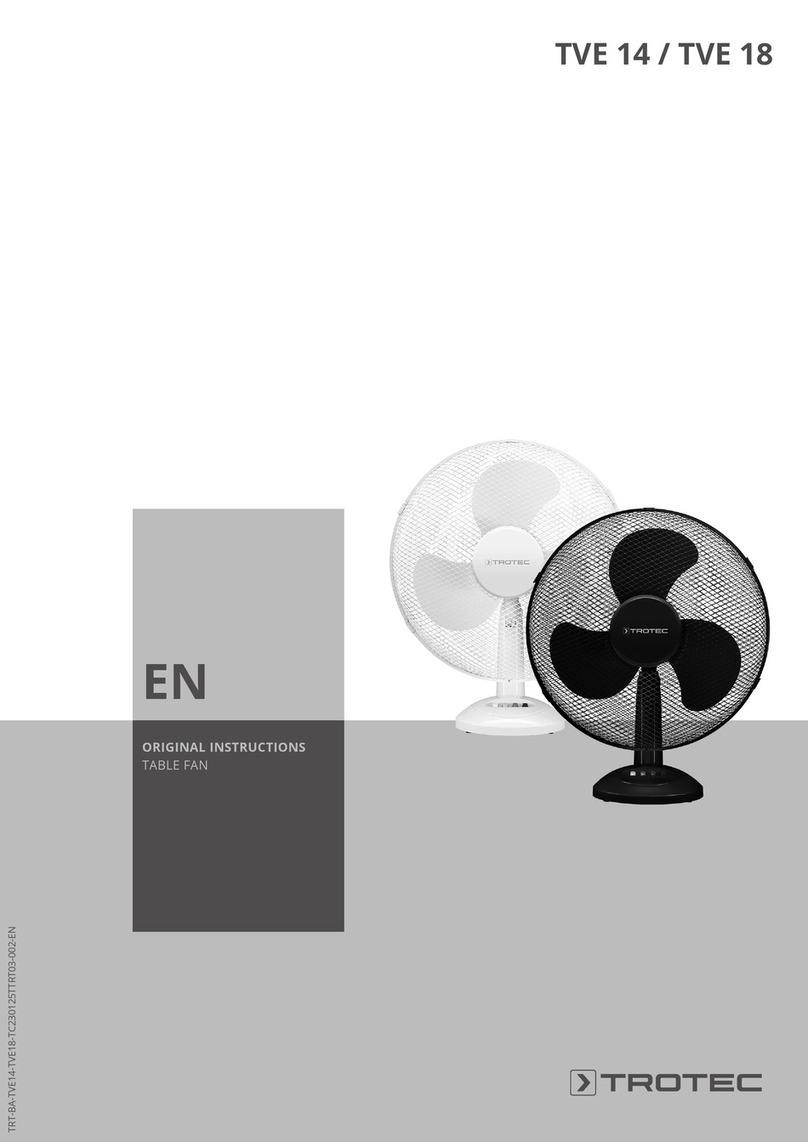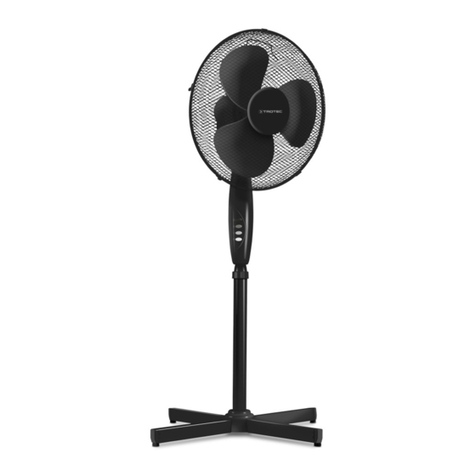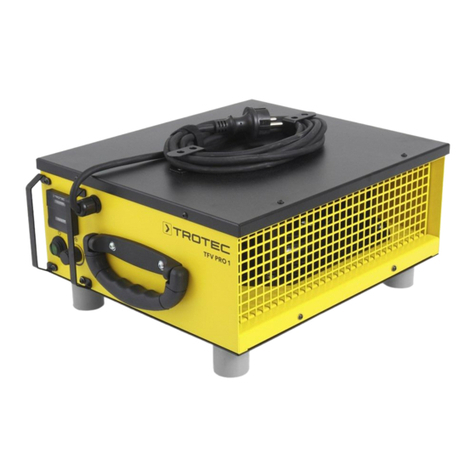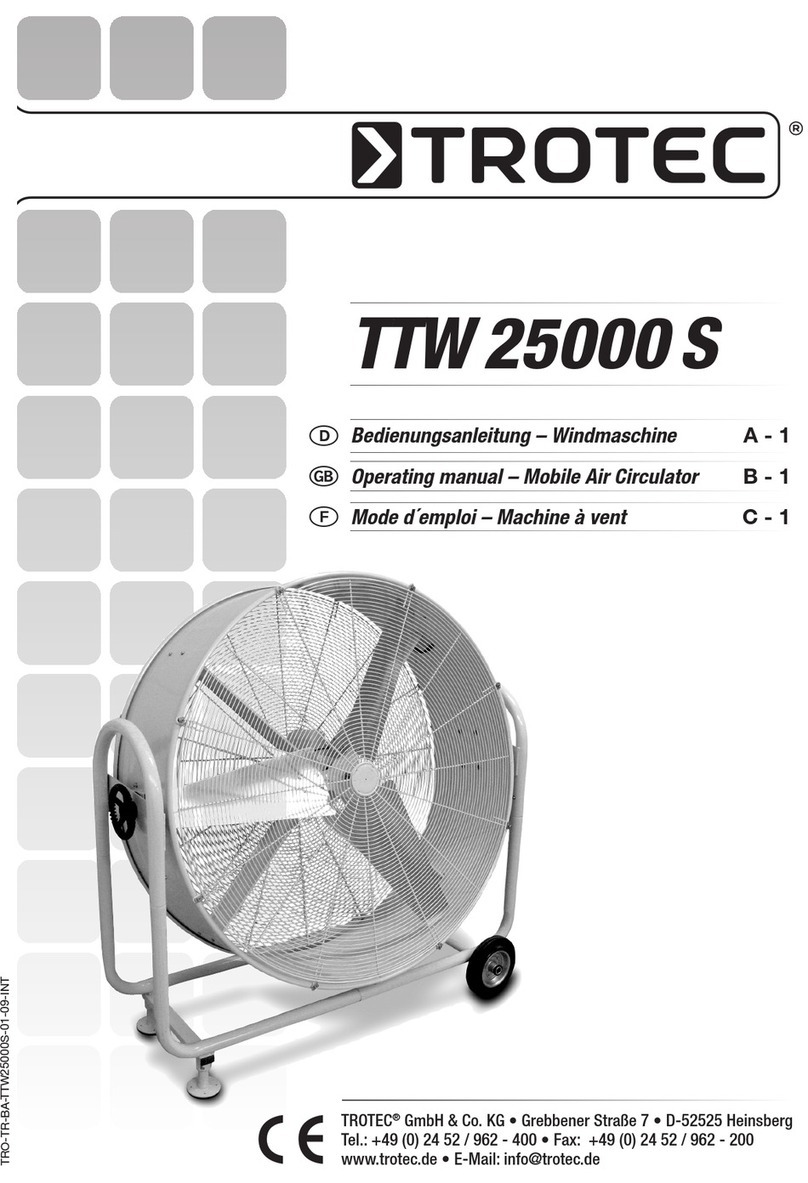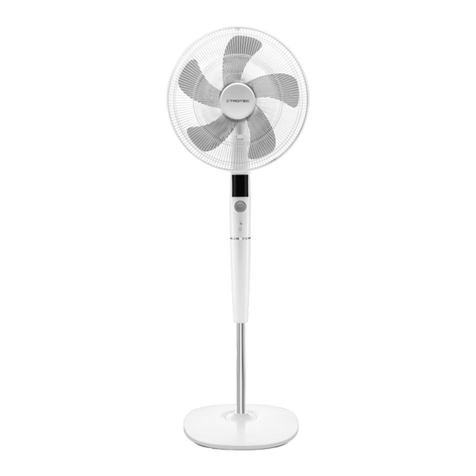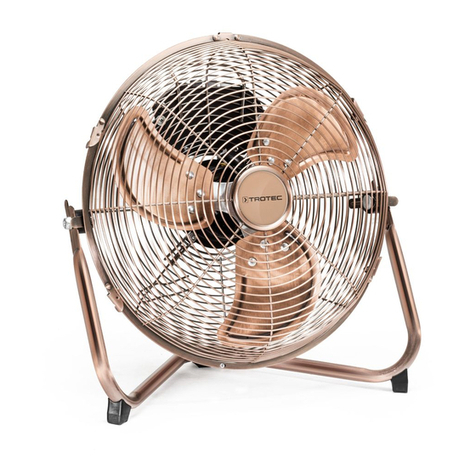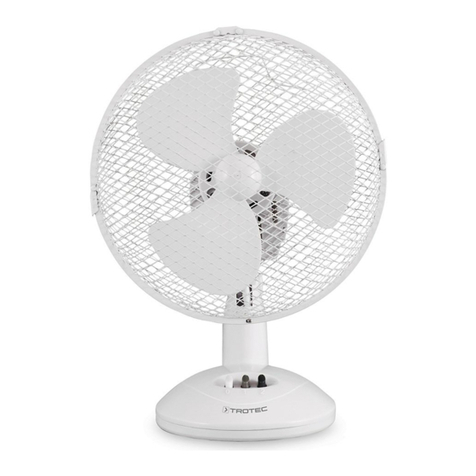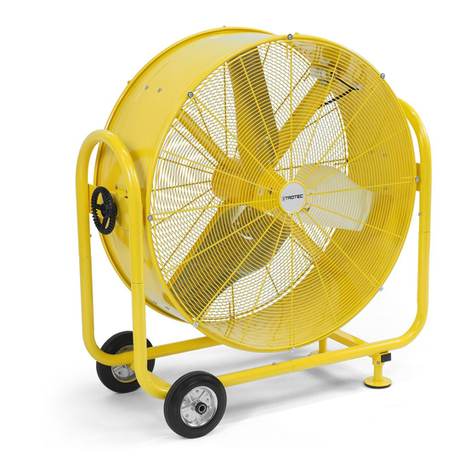
EN Operating manual – Conveying fan TTV 1500 / TTV 2500 2
Warranty and liability
The device complies with the fundamental health and safety
requirements of the applicable EU regulations and was tested at
the factory for perfect functionality multiple times.
However, if faults in the functionality occur and cannot be
remedied with the measures in the Errors and faults chapter,
please get in touch with your dealer or distributor.
When manufacturer's instructions or legal regulations have not
been followed, or after unauthorised changes to the device are
made, the manufacturer is not responsible for the resulting
damages. Changes to the device or unauthorised replacement of
individual parts can drastically impact the electrical safety of this
product and leads to the forfeit of the warranty. Liability does not
extend to damages to people or property caused by the device
being used other than as described in the instructions in this
operating manual.
Subject to changes to technical design and model changes as
part of constant development and product improvement without
prior notice.
No liability is accepted for damages resulting from improper use.
In such a case, any warranty claims will be voided also.
Read this manual carefully before starting or using the
device. Always store the manual in the immediate vicinity of
the device or its site of use.
Warning!
Improper handling can lead to injuries due to parts
being whirled up.
• Do not use the device in potentially explosive rooms.
• Do not use the device in aggressive atmosphere.
• Set the device up in an upright and stable position.
• Let the device dry out after a wet clean. Do not operate it
when wet.
• Do not use the device with wet or damp hands.
• Do not expose the device to directly squirting water.
• Never insert any objects or limbs into the device.
• Do not cover or transport the device during operation.
• Do not sit on the device.
• This appliance is not a toy! Keep away from children and
animals. Do not leave the device unattended during
operation.
• Check accessories and connection parts for possible damage
prior to every use of the device. Do not use any defective
devices or device parts.
• Ensure that all electric cables outside of the device are
protected from damage (e.g. caused by animals). Never use
the device if the cable or power connection is damaged!
• The electrical connection must correspond to the
specifications in the Technical data chapter.
• Insert the mains plug into a properly secured mains socket.
• Observe the technical data when selecting extensions to the
power cable. Completely unroll the extension cable. Avoid
electrical overload.
• Hold onto the mains plug while pulling the power cable out of
the mains socket.
• Switch the device off and disconnect the power cable from
the mains socket when the device is not in use.
• Do not under any circumstances use the device if you detect
damages on the plug or cables. Defective power cables pose
a serious health risk.
• Observe the operating conditions (see chapter Technical
data).
• Remove the mains plug from the mains socket before
carrying out maintenance, care or repair work on the device.
• Make sure that the air inlet and outlet are not obstructed.
• Make sure that there are no loose items located in the
immediate surroundings of air inlet and air outlet.
• Improper installation can lead to a fire, electric shock or
severe personal injury.
Intended use
The conveying fan TTV 1500 / TTV 2500 may be used for
aeration, deaeration, air circulation, dust collection or air
transport whilst adhering to the technical data and the safety
instructions.
The device is designed for aeration and deaeration tasks, for the
generation of a high air exchange rate even in shafts and ducts
and over long distances.
Improper use
The conveying fan TTV 1500 / TTV 2500 is not suited for
installation in fluids or on flooded or boggy grounds.
Any unauthorised changes, modifications or alterations to the
device are forbidden.
Personnel qualifications
People who use this device must:
• be aware of the dangers that occur when using conveying
fans.
• have read and understood the operating manual, especially
the Safety chapter.
Safety

